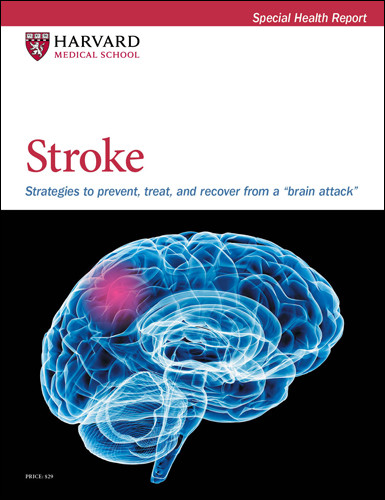How are clogged neck arteries treated?
Ask the doctor

Q. After I had a minor stroke, I had a carotid ultrasound, which showed a nearly 80% blockage in my left carotid artery. How is this condition treated?
A. The carotid arteries, which run up either side of your neck, supply blood to your brain. Just like the arteries in your heart, these arteries can become clogged with fatty deposits (plaque). A stroke can occur if this plaque breaks open and forms a clot that cuts off blood supply to part of the brain, as you experienced. (Note that other possible causes of strokes include severe high blood pressure and clots due to atrial fibrillation.)
Treatment for this problem, known as carotid artery stenosis, includes the same lifestyle habits recommended for people with heart disease, like a healthy diet and regular exercise. But cardiologists also prescribe statin drugs and, if needed, additional cholesterol-lowering drugs to get LDL (bad) cholesterol below 70 milligrams per deciliter. This helps to shrink and stabilize the plaque, making it less likely to rupture. Anti-clotting medications such as aspirin or clopidogrel (Plavix) are also important, as they help discourage the formation of clots (or at least limit their size).
For people like you, with symptoms and a blockage of 70% or greater, clearing out the plaque — known as revascularization — makes sense. There are two ways to open a narrowed neck artery:
Carotid artery stenting involves threading a slender tube called a catheter into an artery at the top of the thigh. The doctor maneuvers the catheter through the blood vessels up to the narrowing in the carotid artery, and uses it to place an umbrella-shaped filter beyond the narrowing to catch any dislodged plaque or debris. Once everything is in place, a balloon on the catheter is inflated, mashing the plaque into the artery wall and expanding a small wire mesh tube (stent). The doctor then deflates the balloon and removes the catheter and filter, leaving the stent in place to hold the artery open.
Carotid endarterectomy involves physically removing plaque from inside the carotid artery. A surgeon makes an incision in the neck to expose the artery, clamps the artery, then opens it lengthwise in the region of the narrowing. After scraping the fatty plaque out of the artery, the surgeon enlarges the artery with a diamond-shaped patch, stitches the artery back together, then closes the skin of the neck.
For both of these procedures, the goal is to prevent a future stroke, and both do this quite well. But these invasive procedures sometimes trigger a stroke, which is why they are mostly done in people with severe carotid artery narrowing who have had symptoms. The risk of stroke is low when experienced clinicians perform the procedures in hospitals where these are done often.
Image: © wildpixel/Getty Images
About the Author

Christopher P. Cannon, MD, Editor in Chief, Harvard Heart Letter; Editorial Advisory Board Member, Harvard Health Publishing
Disclaimer:
As a service to our readers, Harvard Health Publishing provides access to our library of archived content. Please note the date of last review or update on all articles.
No content on this site, regardless of date, should ever be used as a substitute for direct medical advice from your doctor or other qualified clinician.













